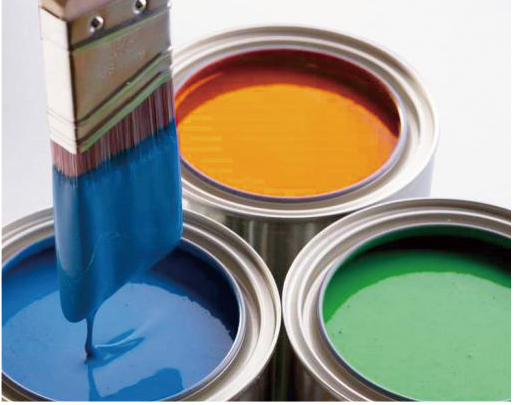Silica sol for inorganic coatings
#Application ·2025-08-21 16:44:30

Inorganic coatings are coatings with inorganic materials as the main film-forming substances. They have significant advantages such as environmental friendliness, high-temperature resistance, and strong weather resistance, and are widely used in construction, industry, transportation and other fields. Silica sol, as a high-performance inorganic colloid, has become an indispensable core component in inorganic coatings due to its unique physical and chemical properties, playing a key role in enhancing coating performance and optimizing construction effects. The following is a detailed introduction from aspects such as the compatibility of silica sol, specific application scenarios, mechanism of action and advantages.
I. Basis of Compatibility between Inorganic Coatings and Silica Sol
The core component of silica sol is nano-scale silica (SiO₂) particles (with a particle size typically ranging from 5 to 100nm), which are dispersed in water to form a stable colloid. Its properties are highly consistent with the requirements of inorganic coatings:
- Consistent inorganic properties: The film-forming substances of silica sol and inorganic coatings (such as silicates, phosphates, etc.) both belong to inorganic systems and have excellent compatibility. They will not stratify or fail due to the difference between organic and inorganic substances.
- High reactivity: The particle surface is rich in hydroxyl groups (-OH), which can undergo condensation reactions with metal oxides, silicates, etc. in inorganic coatings, forming a strong chemical bond.
- Controllable film-forming property: During the drying process, SiO₂ particles aggregate and sint with hydroxyl groups to form a continuous and dense inorganic film, which has both air permeability and water resistance.
- Outstanding environmental friendliness: It only contains SiO₂ and water, without formaldehyde, VOC and other organic volatile substances, which is completely in line with the "zero pollution" environmental protection positioning of inorganic coatings.
Ii. Specific Application Scenarios in Inorganic Coatings
Silica sol can be used as a film-forming substance, binder or performance regulator in inorganic coatings, and is compatible with various types of inorganic coating products:
Inorganic coatings for building exterior walls
The exterior walls of buildings need to withstand long-term erosion from wind, sun exposure, rain, ultraviolet rays, etc. The addition of silica sol can significantly enhance the weather resistance and durability of the coating.
- As the main film-forming substance: When compounded with potassium silicate, sodium silicate, etc., it forms a three-dimensional network structure of "SiO₂- silicate", and the hardness of the coating can reach over 3H, with the impact resistance increased by 20%-30%.
- Enhanced water resistance: The SiO₂ film structure after curing is dense, which can prevent water penetration while retaining a certain degree of air permeability (avoiding the accumulation of moisture inside the wall and causing blisters).
- Anti-fouling and self-cleaning: The coating surface formed by nano SiO₂ is smooth and not easy to adsorb dust. It can be restored to cleanliness after being washed by rain (its self-cleaning property is superior to that of traditional inorganic coatings).
2. High-temperature resistant inorganic coatings
Inorganic coatings used in high-temperature environments (such as boilers, chimneys, and industrial kilns) need to withstand temperatures above 500℃. Silica sol is the core functional component.
- It does not decompose or volatilize at high temperatures. After sintering, SiO₂ particles form a high-temperature resistant glass body (melting point 1723℃), which can withstand short-term temperatures above 1000℃.
- Combined with high-temperature resistant fillers (such as alumina and zirconia), a stable coating is formed through the bonding effect of silica sol to prevent the fillers from falling off at high temperatures.
- Application scenarios: Surface protection of industrial equipment, anti-corrosion of high-temperature pipelines, base layer of fireproof coatings, etc.
3. Inorganic floor coating
Inorganic flooring should possess properties such as wear resistance, compressive strength, and resistance to chemical corrosion. Silica sol can optimize its physical and mechanical properties.
- As a bonding enhancer: When combined with inorganic aggregates such as cement and quartz sand, SiO₂ reacts with the hydration products of cement (calcium hydroxide) to form calcium silicate gel, enhancing the compressive strength of the floor (up to over 60MPa) and wear resistance (the wear resistance is 50% higher than that of ordinary cement floors).
- Anti-seepage and anti-corrosion: The dense SiO₂ film blocks the penetration path of moisture and chemical media (such as acid and alkali solutions), making it suitable for scenarios like chemical workshops and laboratories.
4. Inorganic functional coatings
In inorganic coatings with special functions (such as fire prevention, mold resistance, and electrical conductivity), silica sol plays a role as a carrier or co-agent:
- Fireproof coating: When combined with intumescent flame retardants (such as vermiculite, aluminum hydroxide), the silica sol cures at high temperatures to form a SiO₂ insulation layer, enhancing the fire resistance performance.
- Anti-mold coating: The SiO₂ film structure is dense, which can block the water and nutrient channels for mold growth. Combined with inorganic antibacterial agents (such as silver ions), the anti-mold effect is enhanced.
- Conductive coatings: As a dispersion carrier for nano-conductive particles (such as graphene and carbon nanotubes), their high dispersibility ensures the uniform distribution of conductive particles and reduces the resistance of the coating.
Iii. Mechanism of Action: How to Enhance the Performance of Inorganic Coatings?
The core role of silica sol in inorganic coatings is achieved through a dual mechanism of "physical filling" and "chemical bonding" :
-
Film formation strengthening and structural densification
During the drying process of the coating, the water in the silica sol evaporates, and the nano-SiO ₂ particles are closely packed due to the mutual attraction of surface hydroxyl groups, gradually forming a continuous SiO₂ network structure. This structure can fill the micro-pores and gaps in the coating, reducing the porosity of the coating (typically by 30% to 50%), thereby enhancing the water resistance, impermeability and mechanical strength of the coating. -
Chemical crosslinking and interface bonding
The hydroxyl groups (-OH) in silica sol can undergo condensation reactions with the film-forming substances in inorganic coatings (such as SiO₃²⁻ of potassium silicate) (-Si--OH + HO-Si- → -SI-O-Si - + H₂O), forming a more stable covalent bond structure. At the same time, it can react with the hydroxyl groups on the surface of the substrate (such as concrete, metal), enhancing the adhesion between the coating and the substrate (the adhesion grade can reach level 0, that is, no peeling). -
Improved weather resistance and stability
SiO₂ itself has excellent resistance to ultraviolet aging (it does not absorb ultraviolet rays and will not degrade due to light exposure), and is also resistant to high temperatures and acid and alkali corrosion. The coating formed by silica sol can prevent ultraviolet rays from damaging the substrate, and at the same time resist chemical erosion such as acid rain and industrial waste gas, thus extending the service life of the coating (the service life of exterior wall coatings can reach more than 15 years, far exceeding that of ordinary organic coatings).
Tags:





